#the andromeda evolution
Text
I'm leveling Brynja more along the lines of Sentinel this playthrough and DAMN is it fun!! In the past I've written and played her as more of a Vanguard, and it does suit her, but man I'm really vibing with this more tech-y approach
Tech armor saves my ass once again!!
(I never used to use it, but since having to relearn the game and start over from scratch without the benefit of having at least 4 different completed new game pluses under my belt, it's become a lifesaver. Miss my biotic jumps tho ;-;)
#her brother is supposed to be the more tech-y one in the family and i think that still stands lore wise#idk i just love her evolution from untested adept to veteran vanguard#to having mastery of a huge variety of biotic tech and combat skills#she really is a one woman army#in addition to diplomatic experience and jack-of-all-trades scientific skills!!#i love her. she really becomes the ideal pathfinder#brynja ryder#mass effect andromeda
1 note
·
View note
Text
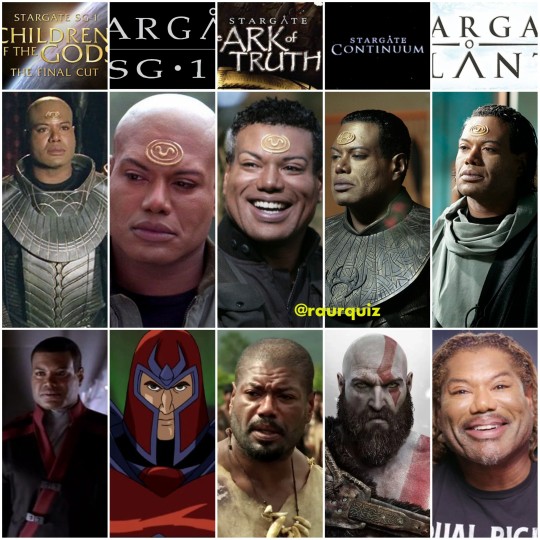
#happybirthday #christopherjudge #actor #tealc #StargateSG1 #ChildrenoftheGods #TheArkofTruth #Continuum #atlantis #BirdonaWire #Cadence #NeonRider #MacGyver #Andromeda #TheMentalist #XMenEvolution #HeManandtheMastersoftheUniverse #MegaSharkVsMechaShark #GodofWarRagnarök
#happybirthday#christopher judge#actor#tealc#stargate sg1#childrenofthegods#thearkoftruth#continuum#atlantis#bird on a wire#cadence#neonrider#macgyver#andromeda#the mentalist#x men evolution#hemanandthemastersoftheuniverse#megasharkvsmechashark#god of war ragnarok
4 notes
·
View notes
Text

3 notes
·
View notes
Text
has anyone been thinking about the Andromeda Initiative stumbling into the galaxy far, far away like hi we’re from the milky way and we only just got our feet under us & made friends with the locals in one itty bitty cluster, wonder who else is out there :) and when they get their answer it’s sith and jedi perpetually at each others’ throats waxing poetic about “””the force”””. and the pathfinders look between each other like “damn biotics off the shits in this place”
#this line of thought brought to you by jedi fallen order and the zeffonians making me think of the jardaan#why the fuck there are humans native to andromeda? fuck dude idk parallel evolution. it is simply the nature of scifi that all aliens evolve#into humanoid shape bc that's what the studio has budget for. fantasy space version of carcinization.#mass effect#sw#goblin noises.
19 notes
·
View notes
Text
Reading Andromeda Evolution post-2020 is so fucking funny
1 note
·
View note
Photo

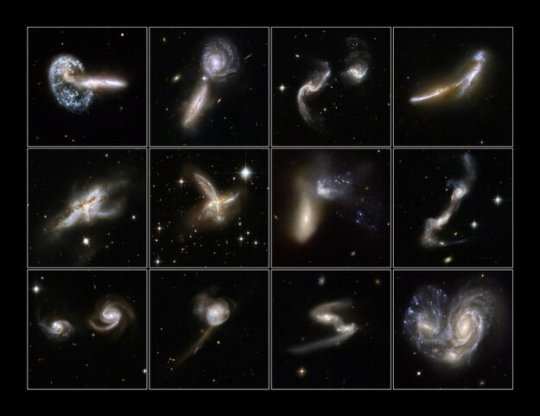
Andromeda's violent history A detailed analysis of the composition and motion of more than 500 stars has revealed conclusive evidence of an ancient collision between Andromeda and a neighboring galaxy. The findings, which improve our understanding of the events that shape galaxy evolution, were presented by Carnegie's Ivanna Escala Monday at the meeting of the American Astronomical Society. Galaxies grow by accreting material from nearby objects—other galaxies and dense clumps of stars called globular clusters—often in the aftermath of a catastrophic crash. And these events leave behind relics in the form of stellar associations that astronomers call tidal features. This can include elongated streams or arcing shells moving around the surviving galaxy. Studying these phenomena can help us understand a galaxy's history and the forces that shaped its appearance and makeup. "The remnants of each crash can be identified by studying the movement of the stars and their chemical compositions. Together this information serves as a kind of fingerprint that identifies stars that joined a galaxy in a collision," Escala explained. She and her collaborators—Karoline Gilbert and Mark Fardal of the Space Telescope Science Institute, Puragra Guhathakurta of UC Santa Cruz, Robyn Sanderson of the University of Pennsylvania, Jason Kalirai of Johns Hopkins Applied Physics Laboratory, and Bahram Mobasher of UC Riverside—studied 556 red giant branch stars in a physical feature of Andromeda called the Northeast shelf, which forms a sharp ledge in the density of the galaxy's material. "We performed the first detailed characterization of the chemical composition and geometric motion of the stars in this region of our neighboring galaxy, demonstrating conclusively that the NE shelf is a tidal shell predominately composed of debris from the aftermath of a collision," Escala explained. Their work also demonstrates that the NE shelf is part of a multi-shell system with the galaxy's West and Southeast shelves and that the material in these regions is consistent with that of Andromeda's Giant Stellar Stream, linking all of these tidal features as potentially originating from the same source. "Our results are in line with modeling that predicted the Giant Stellar Stream is the first loop of material from a collision and the NE shelf is the second layer wrap-around," Escala concluded. This level of analysis confirms predictions about Andromeda's violent past and informs astronomer's understanding of how material accreted by collisions shapes a galaxy's surrounding features and evolutionary history TOP IMAGE....The Andromeda Galaxy, also known as M-31. Credit: NASA /MSFC / Meteoroid Environment Office / Bill Cook LOWER IMAGE....Collisions between galaxies create tidal artifacts with all sorts of shapes. This new work from Ivanna Escala found conclusive evidence that Andromeda's Northeast, West, and Southeast shelfs and Giant Stellar Stream are the result of a collision with another galaxy. Studying these tidal features can teach us about how galaxies grow and evolve over time as they accrete new material. Credit: NASA, ESA, Hubble Heritage Team (STScI/AURA)-ESA/Hubble Collaboration and A. Evans (University of Virginia, Charlottesville/NRAO/Stony Brook University), K. Noll (STScI), and J. Westphal (Caltech).
6 notes
·
View notes
Text
Andromeda Evolution
Series: The Andromeda Strain (#2)
Author: Daniel H. Wilson
My Rating: 2/10 ⭐⭐
Goodreads rating: 3.71/5
Date Read: Early 2022
Plot Summary: Following the events of the Andromeda Strain scientists believed the Andromeda Strain was no longer a threat and it faded from public attention. Many decades later, a government watch program finds signs that the Andromeda Strain is reemerging in the Amazon rainforest. An elite team of scientists is recruited to travel to the appearing anomaly, study it, and ultimately figure out how to stop it. They must travel through uncharted areas of the forest while fighting an unknown alien force that wants to stop their meddling at any cost. Tragedy and action go hand and hand in this story as the scientists make necessary sacrifices to save the world.
TL:DR: A poor attempt at recapturing the scientific wonder found in books like The Martian, this book suffers from dense, unnecessary scientific explanations, horrible characters, obnoxious foreshadowing and a bad antagonist.
Thoughts and Feelings: The original Andromeda Strain was a sci fi book written in 1969 by Michael Crichton who also wrote the Jurassic Park books. He was a great science fiction writer with really good ideas. It's a book I look back on very fondly. So when I found out there was a follow up book written by a different author I was extremely curious. Especially because the original story did not leave any room for sequels. So this story was already starting at a deficit and unfortunately it did not make up for it in any way. I had not read any books by Daniel Wilson before this book and I do not plan on reading anymore of his books after it.
The first half of this book is dragged down by a lot of unnecessary science that is not necessary to the story, the characters, or the understanding of the technology being presented. It feels like it was trying to mimic the type of science rambling and explanation that was so successful in Andy Weir's books, but in Andromeda Evolution the science lacks any character. In The Martian we have Mark Watney infusing his wit and sarcasm into the explanations, but in this book it reads like a text book with no personality.
Foreshadowing is a technique that should be subtle and used sparingly throughout a book. Andromeda Evolution ends every single chapter with a premonition of the future events of the book to the point where it stops being foreshadowing and becomes spoilers in their own rights. It resulted in me not being surprised by anything that was happening as well as keeping me from caring about the characters or the stakes being raised. Because I already knew what was going to happen.
The characters in this book are bad. All of the characters are introduced right at the beginning subsequently and the introductions throw the recommendation of 'show don't tell' straight out the window. You will have to suffer through boring descriptions of these scientists idiosyncracies and the struggles that they have fought through to get where they are. Of a special mention is the introduction of the female characters. Wilson makes sure to shove down the readers' throats that these women have struggled and they have been discriminated against there whole lives. And because of that they are super amazing, smart, and capable of taking care of themselves. Too bad they don't ever get to really display that.
There's just no nuance to this book and while there is action going on through out it ends up feeling boring.
Spoiler Thoughts and Feelings below
To continue on with my dislike of the characters in this book, the primary antagonist and secret villain behind the mutation and spread of the virus being the disabled woman who is apparently a psychopath whose only goal is to murder all of her teammates and 'force the human race' to evolve faster is just so not it.
Also the romance between Jeremy Stone and Nidhi Vedala was SO WEIRD and unnecessary and badly written. The book starts with Nidhi describing in detail how much she hates Jeremy and then through the course of the event of the books through no character growth or real interactions she ends up in love with him. The female characters in this book were written as if Daniel was really trying to write 'strong female characters' but he has not idea what that means and just made them 2D images of what a strong woman might be.
0 notes
Text

The Andromeda Galaxy~taken from NASA Galaxy Evolution Explorer
This is our neighbouring galaxy. Scientists have observed blue shift which suggests it is accelerating towards us. But not to worry, no catastrophic collision will occur and not any time soon. The spaces between stars, planets etc is so large that actual collisions are very unlikely.
#astronomy#space#astrophysics#photography#astrophotography#stars#constellations#philosophy#nasa#nebula
1K notes
·
View notes
Text

Gateway to Andromeda
Talon Abraxas
These ethereal beings are believed to originate from the Andromeda Galaxy, one of the closest neighboring galaxies to our Milky Way.
They are believed to have had a significant mission that motivated their journey from the Andromeda Galaxy to Earth: to aid in humanity's spiritual development.
Andromedan Starseeds are said to carry within them a deep connection to the vast cosmic energy that permeates the universe, drawing upon the wisdom and knowledge amassed from their distant celestial abode.
Exploring the cosmic origins of Andromedan Starseed unveils a tapestry of intricate connections between distant star systems and our own.
-Exploring Andromedan Starseeds: Cosmic Origins & Spiritual Evolution
36 notes
·
View notes
Text
Time Travel Question 19: Miscellaneous
These Questions are the result of suggestions from the previous iteration.
This category may include suggestions made too late to fall into the correct grouping.
Please add new suggestions below if you have them for future consideration.
86 notes
·
View notes
Text
Die a Hainly or Live Long Enough to See Yourself Become the Vilia: Gender, Breath of the Wild, and Representational Sterility
Thanks to @start-anywhere for encouraging me to write this essay!
Major spoilers for Breath of the Wild, minor spoilers for Mass Effect Andromeda and Horizon: Forbidden West, as well as the Tears of the Kingdom trailer and H:FW Burning Shores.
cw: transmisogyny.
"Be careful playing the Gerudo segment," I heard from friends. "There's a transmisogynist joke there."
There's a lot I don't remember about 2017. That year was a perfect recipe for dissociation: I was finishing a very fraught and frustrating PhD dissertation and TAing at the same time, with very little sleep. I was constantly worrying about finding a job after graduation, and moving to a new city sight unseen. I spent the first two months of the year away from Emma for a math fellowship, the longest we'd ever been apart.
And on top of that, I was a closeted trans femme living in Laramie, Wyoming, a town famous for a homophobic hate crime, during the first year of the Trump administration. My gender pressure had been building for years, out to friends online but not to anyone in person save Emma. I knew I wasn't a man but the closest I could come to expressing it was wearing skirts at home, and nail polish on the weekends. (Apply Friday afternoon, remove Sunday evening, repeat weekly.)
But I do remember playing Breath of the Wild with Emma.
Zelda is in the DNA of our relationship -- Emma showed me Ocarina of Time before we even started dating, Twilight Princess was one of the first games we played through together, and I proposed to her with a ceramic replica I made of Anju and Kafei's wedding mask from Majora's Mask.
So, getting to play a new Zelda game -- an extremely good one, at that -- with her, during one of the worst years of my life, was an incredible beacon of light.
So the warning about a transmisogynist joke in the Gerudo segment was disappointing, but I kept it in mind as we played.
For those who haven't played the game, here's a quick synopsis of that quest: Link, our hero, needs to access Gerudo Town, a town of all women. (Sorta. Put a pin in that. 📌) You talk to a male shopkeep outside who tells you that he's heard "a man" has been "sneaking" into town, and he's waiting to catch a peek. Other (Gerudo) characters mention an odd human woman, a merchant, who hangs out on the roof of a bazaar a ways outside town. Up there you find Vilia.

(image source: Zelda Wiki, which correctly genders Vilia unlike some wikis 😒)
If you accuse her of being the "man in disguise" she brushes you off and won't speak to you further. If you compliment her, she'll offer to help you get into town, sell you the Gerudo clothing set (grab another pin 📍) and say how pretty you look, making Link blush. Then the wind will blow her veil aside, which we only see obliquely, but we do see that she has facial hair. Link acts surprised.
Okay. Let's unpack.
First off... Vilia is a trans woman with a beard. I'm just gonna treat that as a fact from this point forward. Everyone who actually interacts with her refers to her as a woman, she refers to herself as a woman, we will set "but maybe she's just a crossdresser" or whatever aside, she's a trans woman. With a beard.
Is that problematic?
A big theme of my evolution as a social justice advocate is that "problematic" is meaningless in a vacuum. The existence of a trans woman with a beard is not, itself, problematic. Otherwise that's pretty bad news for me, a trans femme with a beard.
But her depiction... There are definitely some elements of cultural transmisogyny being upheld here. Stubble is a common feature in popular caricatures of the Gross Tranny. Link's reaction being played for comedy makes Vilia's existence sort of a big joke.
And on a surface level examination, it looks like this is a straightforward "man dresses as woman to gain access to women's spaces" story, straight out of Joanne's Twitter-addled fever dreams.
But other than that, Vilia is pretty well treated by the narrative. All of the Gerudo refer to her as a little odd, but fundamentally a helpful person, and they respect her identity. It's clear when Link runs around Gerudo Town that multiple people clock him, but nobody ever throws him out because they just assume he's a trans woman and therefore implicitly welcome.
Vilia's character model isn't exaggerated in any way I'd consider transmisogynist, aside from the facial hair, and Link in the Gerudo outfit is, well, far from an unflattering portrayal.
And importantly, you cannot progress the main story if you misgender her.
There is no other way to get into Gerudo Town, and thereby the Divine Beast Vah Naboris, if you just say "you're a dude, right?" and don't walk it back. You can technically finish the game without any of the four Divine Beasts, but they make it MUCH easier, and a significant chunk of story is locked behind her quest.
So back in 2017 I played this, went "well that wasn't great but it wasn't as bad as I thought," and went on to wear the Gerudo outfit as much as humanly possible.
Flash forward to my 2023 replay, in anticipation of the sequel. I'm avidly curious to replay this section, given my evolution in my own gender understanding. (The first time around, I id'ed as genderqueer and Definitely Not A Guy but I'm not sure I was comfortable with "trans" yet, and definitely not "situationally a girl".)
Turns out? Vilia fuckin' rules. Gender icon. They hate to see a girlbeard winning.
Ok, I'm exaggerating. (A little.) But there is a reason I'm writing this essay, and I came away with a much improved sympathy for her character and her position in the story. I want to talk about why, but first let's clear a couple of those pins.
📌 The Gerudo are an all-female race. This is historically true in the Zelda games, with the single exception of Ganondorf, an ancient incarnation of evil who is born as the only make Gerudo once in an age. Ganondorf isn't in this game (though he is in the sequel!) so he's not relevant here. There are two things to note here: one, the Gerudo are nonwhite and heavily middle eastern coded. This is something I can't get into, as an Extremely White Person, but their interaction with gender is not without racial context and it would be irresponsible of me to not mention it.
But second, and the thing I will talk about, is that they seldom use the words "man" and "woman", but rather "voe" and "vai". We get these translated for us, but they are just that -- translations. They are gender concepts unique to the Gerudo that get mapped imperfectly to Hylian standards. The Gorons, a race of rock people who all use male pronouns and forms of address, are allowed into Gerudo Town, being "neither voe nor vai". And all of the Gerudo characters treat you differently when you're in the Gerudo clothing, even though it's clear that many of them have the perceptiveness to see through it.
I think it makes perfect sense to interpret "vai" as less "woman" and more "fem presenting". The Gerudo's actions are consistent (arguably, more so) if you do so.
📍The Gerudo armor. There's a few things to talk about here. First, Vilia sells it to you rather than just giving it to you. This seems a bit callous, but there's other similar monetary roadblocks in the game, and she's explicitly a traveling merchant and jewels are (as she says) expensive. I don't blame her.
The Gerudo armor is also, in game, pretty terrible. If you're wearing all three pieces you get a tiny bit of heat resistance, but it has basically no armor and can't be upgraded. There is a purchaseable "voe armor" with similar aesthetics but much better stats, but it can't be used to access Gerudo Town.
This is... Not ideal. I like to run around in the Gerudo armor because Link looks absolutely adorable in it; that was more of a priority back then than it is now that I have my own fem wardrobe, but it's still true. I wish it could be upgraded. I also wish you could just wear whatever armor aesthetically and get a different set of bonuses.
Okay. Now. To explain what it is I actually like about Vilia's portrayal, I want to talk about two other transfeminine characters from open world games: Hainly Abrams from Mass Effect: Andromeda and Wekatta from Horizon: Forbidden West.
Hainly Abrams is a scientist on the planet Prodromos in Mass Effect: Andromeda. In her first conversation with you, you can ask her why she came to Andromeda, and she says she was looking for a fresh start for her transition, and then... weirdly deadnames herself, in a way that feels utterly alien to anyone who's interacted with trans people. BioWare took criticism on this... sort of, and patched that conversation to only happen after you gain her trust by saving her fiance. But it's still extremely jarring. I cannot find information about her voice actress.
Wekatta is a troop leader of the Sky Clan Tenakth in H:FW. Like Vilia, the narrative is actually somewhat cagey as to whether she's a trans woman or not. I don't believe anyone actually refers to her with she/her pronouns, unlike Vilia, and the closest she gets to saying she's trans is
Aloy: And you think he's crazy for trying?
Wekatta: I'm not a fan of that word. When I chose to wear a woman's armor, people called me crazy, too.
Wekatta only shows up for a single minor side quest, and doesn't really get to actually do anything. She is at least voiced by a trans voice actress, Rebecca Root.
Both of these portrayals are mostly free of overt transmisogyny. Hainly deadnames herself in a strange and off-putting way, and Wekatta's portrayal is ambiguous to the point of over-caution, but there's not much that could be read as a transphobic joke like in Vilia's story.
They're also both boring as heck. And neither of them really feels trans.
Both of these characters feel like existing bit-player characters with one "bee tee dubs, I am A Tran" line slapped into their dialog. Sure there isn't anything overtly wrong with that kind of representation, if it's done carefully, but this is "minor character mentions he has a husband" rep, not "on-screen gay kiss with main character" rep. (Side note, though, good for Guerrilla for making Aloy canonically queer in Burning Shores. Haven't played it yet but I'm stoked to. Hell yeah.)
Vilia, as problematic as elements of her portrayal are, feels like a real transfeminine person. She feels more like me. Her gender is kinda messy! She has a girlbeard! She gets to call you out if you misgender her!
And best of all, her interactions with Link (excluding the shocked face at the end, which is pretty annoying) can be read very easily as an older, more experienced trans woman helping a younger trans girl with early transition, giving her her first feminine outfit and complimenting her. There's no wonder why transfem Link is such a popular headcanon. (My personal favorite for Link is some kind of transfeminine genderfluid.)
Vilia isn't perfect, but truly great and realistic trans representation is going to be easier if you start with a Vilia and clip off the overtly problematic bits, than if you start with a Wekatta or a Hainly and try to make them feel more real.
72 notes
·
View notes
Photo

The Andromeda Galaxy in Ultraviolet : What does the Andromeda galaxy look like in ultraviolet light? Young blue stars circling the galactic center dominate. A mere 2.5 million light-years away, the Andromeda Galaxy, also known as M31, really is just next door as large galaxies go. Spanning about 230,000 light-years, it took 11 different image fields from NASA's Galaxy Evolution Explorer (GALEX) satellite telescope to produce this gorgeous portrait of the spiral galaxy in ultraviolet light in 2003. While its spiral arms stand out in visible light images, Andromeda's arms look more like rings in ultraviolet. The rings are sites of intense star formation and have been interpreted as evidence that Andromeda collided with its smaller neighboring elliptical galaxy M32 more than 200 million years ago. The Andromeda galaxy and our own comparable Milky Way galaxy are the most massive members of the Local Group of galaxies and are projected to collide in several billion years -- perhaps around the time that our Sun's atmosphere will expand to engulf the Earth. via NASA
798 notes
·
View notes
Text
nothing like being asked to take my hat off indoors. listen, buddy. the earth is a rock orbiting the sun. it's one of many rocks and assorted non-rocky planets orbiting the sun in something called the solar system. the sun with its solar system is one of several hundred billion stars in the milky way galaxy. the milky way, the andromeda galaxy, and the triangulum galaxy together form the local group (along with their many satellite galaxies). the exact number of galaxies in the local group beyond the 3 largest is unknown, but estimates range from 50 to 80. the local group is part of the virgo supercluster, a concentration of at least 100 galaxy groups. the virgo supercluster, however, is actually just a subpart of the laniakea supercluster, as defined in 2014. the laniakea supercluster is home to approximately 100,000 - 150,000 galaxies, each containing billions of stars with their own planetary systems. the laniakea supercluster spans 160 megaparsecs, or 520,000,000 light years. (one light year equals 9,460,730,472,580.8 km, or 5.88 trillion miles.) the laniakea supercluster is located in the pisces–cetus supercluster complex, a galaxy filament measuring roughly 1,000,000,000 (yes, one billion) light years in length. the number of superclusters in the observable universe is estimated to be 10 million, each home to its own galaxy groups and galaxies and stars and planets and rocks. but the earth is not just a rock within an inconceivably large universe. it is a rock that happens to be very wet. and the reason why the rock is wet, is that it happens to orbit its star, the sun, at the perfect distance for peak wetness.
one unfortunate day between 4.3 and 3.7 billion years ago, this very wet rock spawned microbial life. until the cambrian explosion 538,800,000 years ago, most living things were very simple organisms, but during this period, life diversified rapidly and complex organisms eventually ventured beyond the oceans. the first known footprints on land date to 530,000,000 years ago, and the earliest dinosaurs appeared 225,000,000 years ago, along with the first mammals. the last common ancestor shared by the genera homo (humans) and pan (chimpanzee and bonobo) is estimated to have lived anywhere between 13,000,000 and 5,000,000 years ago.
the earliest appearance of members of the genus homo dates back to about 2,600,000 years ago. fire was discovered 2,000,000 years ago and has been in habitual use for at least 400,000 years, although it may have begun as early as 1,000,000 years ago. the control of fire had a lasting effect on the human diet and, according to the cooking hypothesis, it was an essential element in our evolution as it led to a large increase in energy acquisition while reducing the physical challenges of eating and the amount of energy that had to be spent on digestion. it also allowed innovations in tool making and the creation of art and pottery. it even helped develop early societies. fires required organized cooperation as they had to be maintained, and they offered gathering places for increased social interaction. the use of fire extended the waking day into the evening hours and changed humans' circadian rhythms. in addition to cooked food and artificial light, fire offered protection from predatory animals and cold temperatures, allowing humans to survive in temperate regions.
neanderthals and anatomically modern humans first appeared between 300,000 and 200,000 years ago - the former in europe, and the latter in africa. about 50,000 years ago, modern humans started colonizing the other continents, eventually replacing the neanderthals and all other hominins. the domestication of dogs began around 35,000 years ago. at the end of the last ice age, around 12,000 years ago, modern humans (and their dogs) had populated nearly the entire planet. the agricultural revolution began soon after in west asia and resulted in more and more humans adopting a sedentary lifestyle in permanent settlements with increasingly complex societies. the gradual accumulation of knowledge and technology eventually culminated in the industrial revolution, which began about 250 years ago and resulted in an unprecedented rise in population growth.
between 200 and 100 years ago, the global population of humans nearly doubled – from 1,000,000,000 to 2,000,000,000. within the next 50 years it doubled again, and then again in the 50 years following that. half of the 117,000,000,000 modern humans that have ever lived, lived in the past 2,000 years. only about 9,000,000,000 people, or less than 8%, lived in the 200,000 years before the agricultural revolution – about the same number as the current living human population. 7% of all humans that have ever existed are alive today, still sharing that same rock that happens to be very wet, in that same inconceivably large universe. billions of years spent developing sentience and sapience, on a very wet rock in a very large universe, and you're worried about the fabric covering my skull? take a step back and reassess the situation maybe
#anyway this is the shitpoast in question#recovered from my drafts#with paragraph breaks because tumblr hated my vision of one uninterrupted wall of text#🙄#i wanted you guys to shit your pance at the sight of this thing#alas#another dream destroyed#&#also#if you're reading this im sorry#you are here paying rent -> 🌍
14 notes
·
View notes
Text
Character Evolution - Val Scott
I cycled through a few actresses/artists in my pursuit of my "perfect" Val 😅
I had a pretty firm idea of how I wanted her to look, and her essence (sweet yet fiery, with a hint of melancholy).
Here was my first Val:
Meg Myers


Meg Myers was Val's face claim in the story's infancy, when I was still figuring out her character. Meg had the doe eyes, dark hair and fair complexion I was after for Val, and she was one of my favourite music artists at the time.
I was actually planning on making Val an amateur dancer and part of flash mob, as I was pretty interested in that scene back in 2018-19 😅
Marie Avgeropoulos

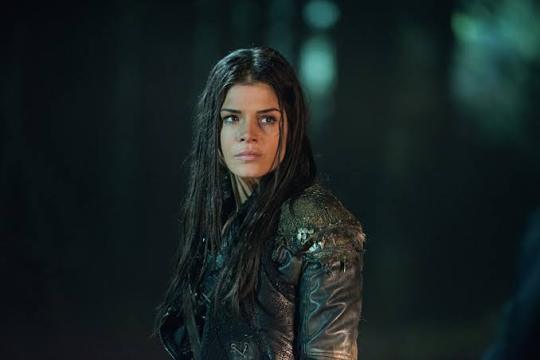
This one was super temporary.
I was bingeing The 100 at the time and Marie's "Octavia Blake" was one of my favourite characters. She had Val's cheeky yet troubled spirit but, appearance-wise, I struggled seeing it.
Lily Collins

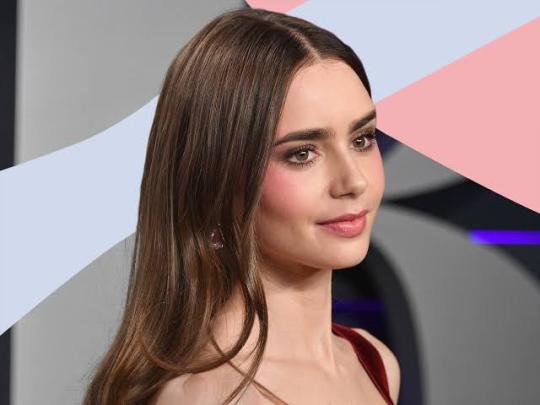
I was watching To The Bone and Lily's "Ellen" caught my attention. I was convinced she'd be my Val, until I watched the Pilot to The Witcher.
Emma Appleton

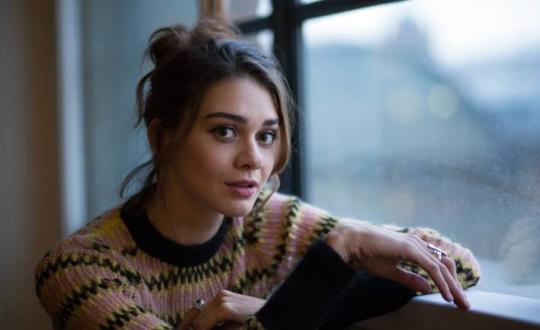
One of the only half-decent episodes of the entire Netflix series featured Renfri, played by Emma Appleton. Whenever she was on-screen, all I could see was Val.
She was Val for quite some time, until I stumbled across our fifth and final actress on Pinterest, of all places...
Katie Douglas
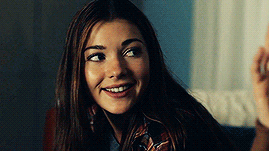
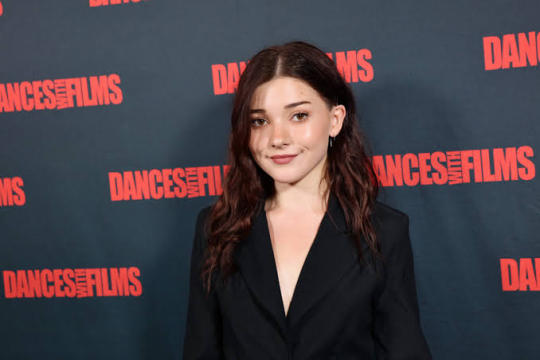
There's a lot going on on that face, in those eyes... Val is a master at masking her true feelings, and Katie just gets it. There's innocence, vivaciousness, unpredictability...
They're also the same height (5'5") 😅
@android-cap-007 @happymoonangel @miss-andromeda
#teenage mutant ninja turtles#tmnt#oc val scott#tmnt oc#tmnt 2007#tmnt 07#tmnt original character#character profile#original character#to build a home#tbah
7 notes
·
View notes
Text

By: Jerry Coyne
Published: Jan 7, 2024
Oops! Scientific American did it again, this time with an op-ed that could have been ripped from the pages of The Onion. As is so common these days, the piece proposes that we change the language of science (astronomy in this case), since some of its terms are bad in four ways:
a. They are violent, sexist, and triggering
b. They are not “beautiful and elegant” like astronomy is, but grating; and they are “not kind”
c. They are non-inclusive, presumably helping keep minorities out of astronomy.
d. They are untruthful and distort astronomy
In my view, none of these claims holds up, for the article is all Pecksniffian assertion with not a shred of evidence. Author Juan Madrid assumes the role of a bomb-sniffing dog, snuffling the field of astronomy for linguistic mines.
Click the headline below to read and weep, or find the piece archived here. The author is identified this way (my link):
Juan P. Madrid is an assistant professor in the department of physics and astronomy at the University of Texas Rio Grande Valley.

The piece begins by describing a collision that will take place, 4 to 7 billion years hence, between the Milky Way and its closest galaxy, Andromeda. Immediately the word “collision” is seen as triggering. One of Madrid’s students described the future collision instead as “a giant galactic hug.” But the person who sent me this link added this comment:
My wife says that if Andromeda doesn’t want the Milky Way to hug her then it’s interstellar sexual assault.
Indeed! But Madrid hastens to instruct us why using “collision” is not only grating, but misleading:
The kindness, but also the accuracy, of the language my student used was in sharp contrast to the standard description we use in astronomy to explain the final destiny of Andromeda and the Milky Way: “a collision.” But as astronomers have predicted, when Andromeda and the Milky Way finally meet, their stars will entwine and create a larger cosmic structure, a process that is more creating than destroying, which is what we envision when we use the term collision. A galactic hug is scientifically truthful, and it’s led me to believe that astronomers should reconsider the language we use.
First of all “collision” doesn’t mean “destroying”, but simply two objects hitting each other. In this case, two galaxies “collide”, but their stars are spread so far apart that they’ll simply merge into one big galaxy and star will not hit star. You could say “merge” instead of “collide”, but that also implies that perhaps the stars will absorb each other. If you want to convey the idea that “nothing gets banged up,” then, Madrid suggests using “galactic hug”. He actually wants astronomers, their classes, and their textbooks, to adopt this new, kind, and romantic term. (There are, of course, more salacious terms that could be used.) But they won’t be because they sound dumb, and in fact “galactic hug” is just as inaccurate as the other terms, for “hug” implies that there is some mutual enfolding, when in fact, the entities merge and do not remain separate, as humans do when they have a (temporary) hug. When Fred and Sue hug each other, they don’t merge into one person. . .
And so Madrid, combing the literature for other terms that are jarring and, he says, misleading, finds more, as of course he would. (You can do this in any field of biology, chemistry. or physics; all you need is a sufficiently diligent Pecksniff). I’ve singled out Madrid’s instances of bad language below by adding my own links, and putting those words in bold.
For instance, in galaxy evolution we invoke imagery strikingly similar to what you would expect if you were eavesdropping on Hannibal Lecter: words like cannibalism, harassment [JAC: no instance found], starvation, strangulation, stripping or suffocation. There is a rather long list of foul analogies that have entered, and are now entrenched, in the lexicon of professional astronomy. We have grown accustomed to this violent language and as a community, we seldom question or reflect on its use.
Strangulation is a particularly cringeworthy term in astronomy, referring to the decline of the number of stars born in some types of galaxies. This is a vicious crime where most often the victim is a woman; the perpetrator, a man. Yet, we use this word mindlessly to describe a slow astronomical process that takes millions of years. Under certain conditions, some galaxies use up or lose the gas that is the primordial ingredient to form stars. When that happens, galaxies make new stars at a lower rate. But these galaxies do not die or suffer great harm. They will continue to shine and will live their natural evolution.
This is but one of many examples of violent language in our field that actually describes something gradual, slow and perhaps even gentle.
Madrid was savvy enough to impute misogyny to one of these terms: “strangulation”, giving some woke heft to his thesis. But if you look at how the terms are used, only someone who wants to be offended would be. Moreover, they are not inaccurate. “Starvation“, for example, refers to something that cuts off the flow of gas that galaxies need for new star formation. I don’t find it inaccurate at all. In fact, none of these terms are inaccurate—what Madrid really objects to is that they are “triggering” and “unwelcoming”. He tries to sell his campaign to deep-six these terms as being “untruthful”, because he doesn’t want to look like an ideologue, but I’m not buying it. Also he allows “explosion” for the creation of a supernova, in most cases he finds this language “needlessly vicious and [promoting] inaccurate connotations.”
In short, Madrid finds this language triggering, for that’s the only explanation for why we should avoid this kind of “vicious” language. And, as he says below,
The use of hypercharged words in our field ignores the fact that this violent imagery can trigger distress in colleagues who might have been victims of violence.
But there are two points to be made here. First, as I noted in a recent post, giving the relevant studies, “Trigger warnings don’t work” and can even cause more trauma. There is no evidence that using this sort of language somehow harms the students. In fact, the remedy for those who are traumatized by certain words is not to avoid exposure to them, but to learn to not be upset when you are exposed. There is therapy for this.
Second, as is so often the case in these screeds, Madrid gives no examples of how the “bad language” upsets people. He should be able to produce at least a dozen cases on the spot, like “Jane got upset and left the class when she heard the word ‘strangulation'”, or “Bob reported Professor Basement Cat to the university for using the term ‘cannibalism’ on the astronomy exam, which, he said, made him think of the Donner Party and prevented him from completing the exam.” In nearly all of these language-policing articles, there is a surfeit of outrage and a dearth of examples or evidence of harm.
But Madrid circumvents the lack of evidence and simply suggests ways that we can censor this language, again pretending he’s interested mainly in scientific truth:
To shift toward more welcoming and truthful language in astronomy, scientific journals can push to change the currently accepted language. The referee, or the scientific editor, can ask the authors to consider more appropriate descriptions of the physical processes involved. Referees, editors and editorial boards can step up to enforce scientific accuracy and stop the use of violent, misogynistic language that is now pervasive. This is a call for scientific precision. The use of hypercharged words in our field ignores the fact that this violent imagery can trigger distress in colleagues who might have been victims of violence.
“Can”, “could have”, “might have”. Where are the examples of this? The sweating professor gives none. And isn’t it amazing that the more accurate language is always the kinder language?
And, as expected, Madrid manages to drag race, inclusion, and diversity into his discussion, even though none of the terms above have anything to do with race. And this belies his faux concern mainly for scientific accuracy:
As astronomers, we must strive to create a more inclusive and diverse community that reflects the composition of our society. Valuable efforts to provide opportunities for women and minorities to succeed in astronomy have been created. However, by many metrics, the progress made towards gender equality and true diversity has been painfully slow.
We must listen to the new generation of astronomers. My student showed me that while some astronomical processes can be intense, the universe revealed through astronomy provides us with the most fascinating sights known to humankind. Like many other young scientists, she thinks that when we explain astronomical phenomena with wording and phrases that share our excitement and appreciation, it also encourages others to join in and wonder what else we can discover together.
The universe is beautiful, elegant and ever-changing. Astronomy would be wise to follow its lead.
And so, in the end, we see that this kind of misguided effort, concentrating on words rather than science itself, is part of the corruption that has entered science via DEI and its ideology. What we have is one more attempt to control thought by controlling language.
There is no evidence that minorities and women are being kept out of astronomy because they don’t find its language “inclusive,”, though that’s really the thesis of Madrid’s piece. But the very idea that this thesis is true is laughable. Promoting the idea that galaxies hug each other is not going to bring people pouring into astronomy.
Once again Scientific American, trying to ride the woke bandwagon, has fallen off the train. Blame not only the author, but the editor, who actually approved this nonsense.
==
These people are fucking lunatics.
#Jerry Coyne#Scientific American#SciAm#astronomy#DEI#DEI must die#DEI bureaucracy#diversity equity and inclusion#diversity#equity#inclusion#religion is a mental illness
7 notes
·
View notes
Text
hiya have some voice claims for my ocs
• Callisto Mars
Voice: Haley Tju as Marcy Wu in Amphibia
• Castor Mars
Voice: Michael Kovach as Serial Designation N from Murder Drones
• Tempest Noctira
Voice: AJ Michalka as Catra from She-Ra and the Princesses of Power
• Lyra Mars
Voice: Zeno Robinson as Hunter from The Owl House
• Elio Mars
Voice: Jerry Jewell as Kusuo Saiki from The Disastrous Life of Saiki K (English Dub)
• Andromeda Mars
Voice: Dawn M. Bennett as Lusamine from Pokémon Evolutions
• Orion Mars
Voice: Keith David as King Andrias from Amphibia
#smolldust#smolldust rambles#rambling#The secrets of the mars family#Callisto mars#Castor mars#Tempest noctira#Lyra mars#Elio mars#Andromeda mars#Orion mars#Ocs#my ocs#oc#origianl character#original characters#oc story#my oc story#original story
10 notes
·
View notes